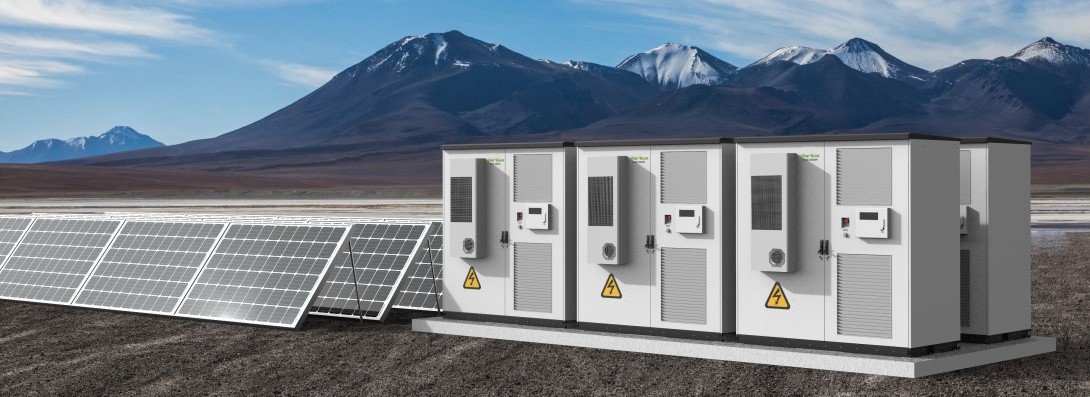Industrial Battery Storage Systems for Factories: How Energy Storage Is Powering the Next Generation of Manufacturing
Introduction
Industrial battery storage systems are no longer optional for factories—they are rapidly becoming the foundation of modern manufacturing energy strategy. From offsetting peak electricity costs to maintaining stable operations during grid fluctuations, energy storage enables factories to operate more efficiently, sustainably, and competitively in today’s power-hungry industrial landscape.
This article explores how battery energy storage systems (BESS) are transforming industrial power infrastructure, what benefits they bring to factories, and how to choose the right solution for your specific energy demands.
Why Factories Need Battery Storage Systems
- Managing Energy Costs through Peak Shaving
Factories typically face high demand charges due to heavy machinery, HVAC systems, and production lines that spike during certain hours. Industrial battery storage systems allow facilities to store energy during off-peak hours and discharge it during high-demand periods, effectively flattening the load curve and reducing monthly electricity bills.
- Ensuring Reliable Power Supply
Many manufacturing processes depend on continuous and stable power. A short outage or voltage fluctuation can halt production, damage equipment, and cause costly downtime. By integrating a BESS, factories gain instant backup power, similar to a large-scale UPS, ensuring uninterrupted operations during grid instability or short-term blackouts.
- Supporting Renewable Integration and Sustainability
Factories increasingly adopt on-site solar PV systems or other renewable sources. Without storage, however, excess daytime energy is wasted. Battery storage captures that surplus energy and makes it available during nighttime or cloudy conditions—improving renewable utilization and supporting corporate sustainability or ESG goals.
To learn more about the technologies and system architectures behind large-scale factory deployments, explore our detailed guide on industrial energy storage.
Core Components of an Industrial Battery Storage System
A robust industrial BESS combines multiple advanced technologies to deliver performance, safety, and scalability:
- Battery Modules (Lithium Iron Phosphate, LiFePO₄): Offer long cycle life, high safety, and stable thermal characteristics—ideal for industrial workloads.
- Battery Management System (BMS): Monitors cell voltage, temperature, and state of charge to prevent overcharging and ensure safety.
- Power Conversion System (PCS): Converts DC battery power to AC for grid or facility use.
- Energy Management System (EMS): Controls charge/discharge scheduling and communicates with the utility grid or on-site renewable assets.
- Cooling and Enclosure Systems: Maintain temperature balance and protect against dust, humidity, and outdoor exposure.
For outdoor or factory-perimeter installations, reliable thermal control is vital. Modern systems such as the Outdoor Cabinet Air Cooling Energy Storage System combine integrated air-cooling technology with high protection levels, ensuring consistent performance in challenging industrial environments while minimizing maintenance needs.
Key Benefits for Manufacturing Facilities
- Peak Shaving and Load Balancing
By charging during low-cost periods and discharging during peaks, factories can reduce grid dependency and achieve predictable energy costs—especially valuable in states with high demand charges like California or Texas.
- Enhanced Power Quality
Energy storage smooths out voltage dips and frequency fluctuations, ensuring sensitive manufacturing equipment runs without interruption or degradation.
- Grid Independence and Backup Power
In regions prone to grid instability or severe weather, industrial storage acts as a resilient microgrid backbone, keeping critical systems operational even when the utility grid fails.
- Sustainability and Carbon Reduction
Implementing a BESS helps factories cut reliance on fossil fuels, reduce CO₂ emissions, and meet corporate sustainability targets while maintaining operational efficiency.
Design and Deployment Considerations
When designing a factory energy storage project, engineers and energy managers should evaluate several critical parameters:
- Energy Demand Profile: Analyze load patterns to size the battery capacity accurately.
- System Scalability: Choose modular solutions that can grow with facility expansion.
- Thermal Management: Cooling performance directly affects battery lifespan and safety—particularly in high-temperature industrial environments.
- Compliance and Safety Standards: Ensure adherence to UL 9540, NFPA 855, and local fire codes.
- Remote Monitoring and Predictive Maintenance: Intelligent BMS and EMS software enable fault detection, data logging, and preventive servicing to minimize downtime.
Real-World Applications in U.S. Manufacturing
- Automotive Plants: Use large-scale BESS to offset demand peaks from robotic welding lines.
- Food & Beverage Factories: Stabilize power for refrigeration and continuous production cycles.
- Electronics Manufacturing: Deploy clean, uninterruptible power to protect sensitive assembly lines.
- Textile and Plastic Production: Combine solar + storage to cut peak energy costs and support sustainability certifications.
These examples show that energy storage isn’t just an auxiliary system—it’s becoming an integral part of industrial competitiveness and resilience.
How to Choose the Right Industrial Battery Storage Partner
Selecting a trusted supplier is as crucial as choosing the right battery chemistry. When evaluating vendors, factories should consider:
- System Integration Expertise: Proven track record in PCS, EMS, and grid interconnection.
- Battery Quality and Consistency: High-grade lithium cells with mature BMS design.
- Thermal and Safety Design: Comprehensive protection from overheating and electrical faults.
- Local Service and Support: On-site installation, maintenance, and real-time monitoring assistance.
Reliable lithium battery suppliers USA provide not only hardware but also full lifecycle optimization and seamless integration with factory automation systems—helping manufacturers maximize energy efficiency, resilience, and ROI.
Conclusion
Industrial battery storage systems are redefining how factories consume, manage, and secure their energy. By integrating advanced lithium-based BESS technology, manufacturers can reduce costs, improve reliability, and accelerate their sustainability journey—all while maintaining production efficiency.
Whether installed indoors or in outdoor cabinets, energy storage represents a strategic investment in energy independence and operational stability. As industrial facilities evolve toward smarter, cleaner, and more flexible energy systems, adopting robust storage solutions will be essential for staying competitive in the next generation of manufacturing.


